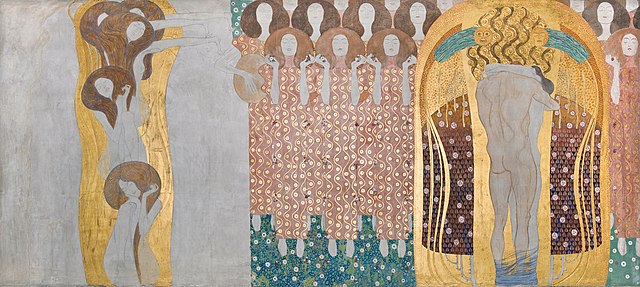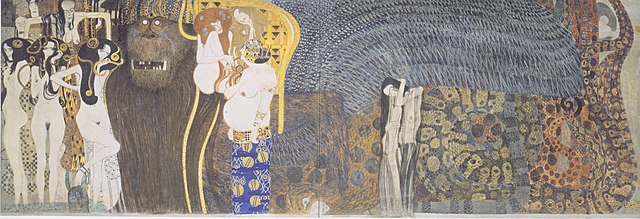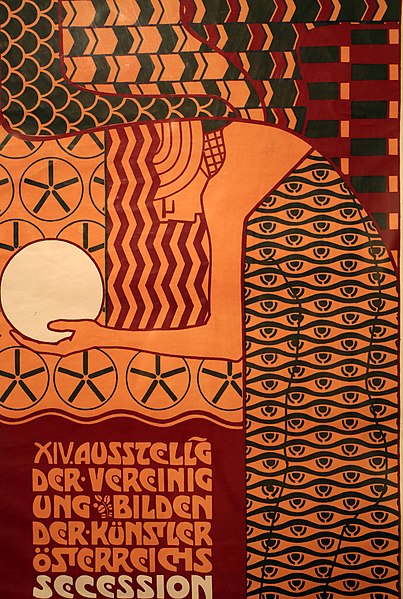Otto Koloman Wagner was an Austrian architect, furniture designer and urban planner. He was a leading member of the Vienna Secession movement of architecture, founded in 1897, and the broader Art Nouveau movement. Many of his works are found in his native city of Vienna, and illustrate the rapid evolution of architecture during the period. His early works were inspired by classical architecture. By mid-1890s, he had already designed several buildings in what became known as the Vienna Secession style. Beginning in 1898, with his designs of Vienna Metro stations, his style became floral and Art Nouveau, with decoration by Koloman Moser. His later works, 1906 until his death in 1918, had geometric forms and minimal ornament, clearly expressing their function. They are considered predecessors to modern architecture.
Facade of the Rumbach Street synagogue (1870–73)
Interior of the Rumbach Street synagogue, Budapest (1870–1873)
Ceramic ceiling decoration and stained glass of Rumbach Street synagogue
Stadiongasse Building, Vienna (1882)
The Vienna Secession is an art movement, closely related to Art Nouveau, that was formed in 1897 by a group of Austrian painters, graphic artists, sculptors and architects, including Josef Hoffman, Koloman Moser, Otto Wagner and Gustav Klimt. They resigned from the Association of Austrian Artists in protest against its support for more traditional artistic styles. Their most influential architectural work was the Secession exhibitions hall designed by Joseph Maria Olbrich as a venue for expositions of the group. Their official magazine was called Ver Sacrum, which published highly stylised and influential works of graphic art. In 1905 the group itself split, when some of the most prominent members, including Klimt, Wagner, and Hoffmann, resigned in a dispute over priorities, but it continued to function, and still functions today, from its headquarters in the Secession Building. In its current form, the Secession exhibition gallery is independently led and managed by artists.

Image: Secession 2016, Vienna
Image: Gustav Klimt Beethovenfries, "Die Künste", "Paradieschor" und "Umarmung" (Tafel 8, rechte Langwand) 5987 8 Österreichische Galerie Belvedere
Section of the Beethoven Frieze by Gustav Klimt in the Secession Building (1902)
Poster for the 14th Secession Exhibit (1902), by Alfred Roller








